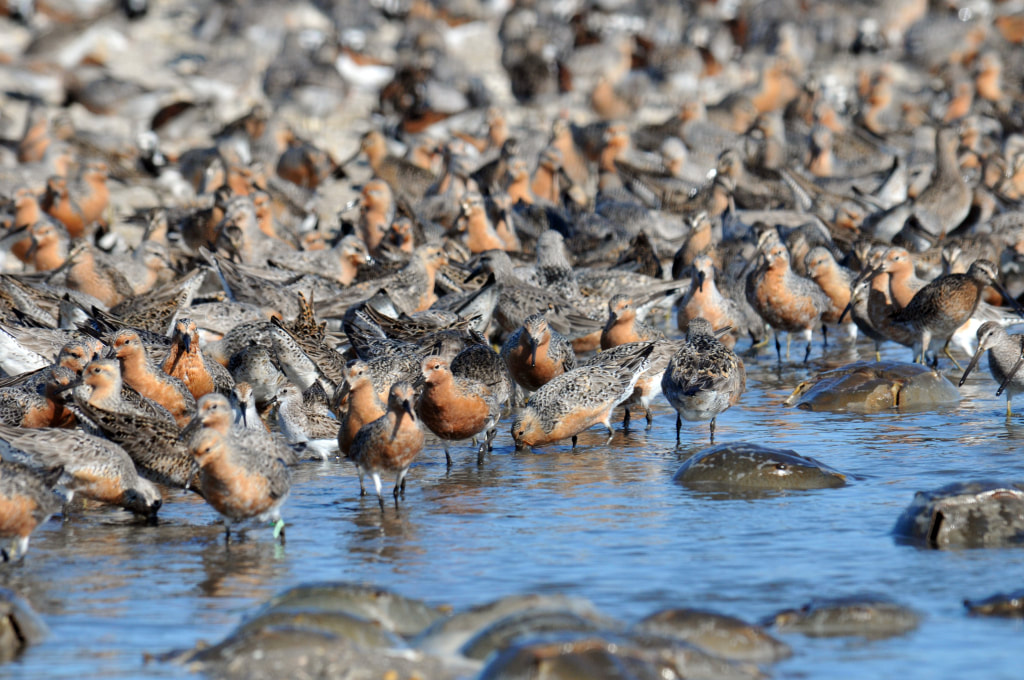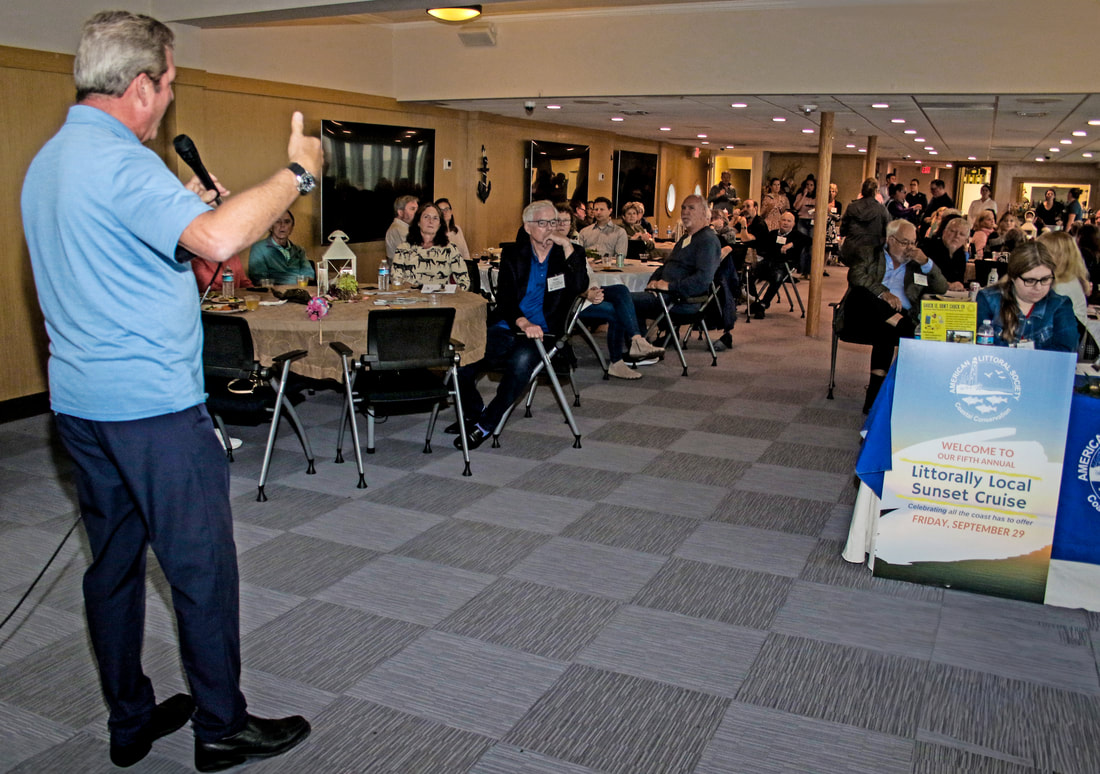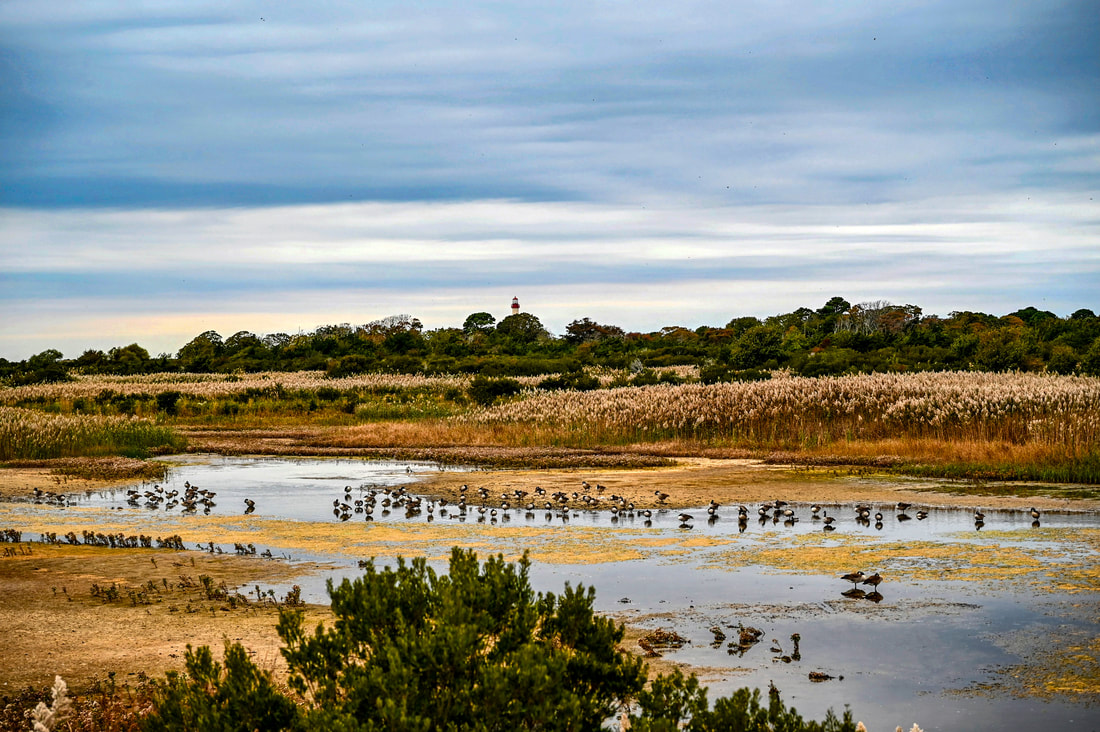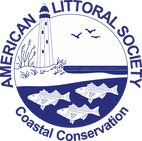|
Female horseshoe crabs in Delaware Bay will be protected for another year, according to a recent announcement from the Atlantic States Marine Fisheries Commission (ASMFC).
Last year, tens of thousands of people like you spoke out against a plan to increase the bait harvest of horseshoe crabs in the Delaware Bay and your voices helped convince the ASMFC not to lift its decade-long moratorium on harvesting female crabs. The American Littoral Society would like to thank you for helping us protect the Delaware Bay's horseshoe crab population and the shorebirds which rely on the crab's protein-rich eggs to fuel their migratory journeys, such as the Rufa Red Knot. Red Knot populations collapsed during the 1990s, at the same time horseshoe crab populations plummeted due to unregulated overfishing, and the birds remain on the U.S. threatened species list. Unfortunately, along with the good news came some bad: the Commission’s Horseshoe Crab Management Board plans to increase the harvest limits for male horseshoe crabs for the 2024 season because - according to their new Adaptative Resource Management (ARM) Framework, which was adopted last year - the population of both female and male horseshoe crabs in the Delaware region is at its highest level since 2003.
In addition to the party, which featured live music by the award-winning duo of Ryan Gregg (The Shady Street Show Band and Ocean Avenue Stompers) and Deseree Spinks (Des and the Swagmatics), the evening included great conversation about the Littoral Society's mission and an online auction that concluded on Saturday, September 30. Among the items up for bidding were tickets to a New York Giants game, fabulous art by local artists, and amazing experiences (such as a private moth party with expert lepidopterist Blaine Rothauser). The event benefited the American Littoral Society's ongoing efforts to support a safe and healthy coast for marine life and humans alike; provide education for people of all ages and backgrounds; and continue advocacy for public access to the coast, natural solutions to the effects of climate change, and responsible environmental policy at the local, state, and national levels. A rainy Saturday didn't dampen spirits or wash out activities during the Littoral Society's 2023 Fall Cape May Wildlife Weekend on October 12-15.
It certainly helped that every other day had near perfect seasonal weather but even amidst a downpour on Saturday, trip attendees still ventured into the wild to marvel at the incredible birds and wildlife that visit or reside in this picturesque part of southern New Jersey. As expected, bird watching didn't disappoint. Cape May is one of the top sites on the east coast for witnessing fall bird migration and trip participants counted 86 different species - including a number of Terns, Teals, and Herons, as well as numerous shorebirds, dozens of ducks (including two Pied-billed Grebe and an American Coot), a Northern Harrier (a ground-nesting raptor with a flat, owl-like face) and three Brown Pelicans. Speaking of raptors, a large variety were sighted (including procrastinating Osprey, Sharp-shinned Hawks, Merlin, Broad-Winged Hawks, two Bald Eagles and a Peregrine Falcon). Many could be seen every day hanging out on light poles and buildings or overhead catching thermals with Turkey Vultures. (See the eBird trip report). Recycled Shells Heading Back to Bay As Littoral Society Completes Forked River Restoration Project10/12/2023
After years of collecting shells, we're ready to return a significant amount of them to a New Jersey bay in what will be the American Littoral Society's first use of recycled shells in a major restoration project.
The shells will be moved from our curing site on Sandy Hook (inside Gateway National Recreation Area) to our Forked River Beach living shoreline restoration project in Lacey Township, NJ on Thursday, October 12. The transportation will also highlight a great public-private partnership, with the construction company currently working on the bridge between Rumson and Sea Bright (Richard E. Pierson Construction Co., Inc.) volunteering to load the shell from the curing site into a truck provided by Lacey Township. “This is a perfect example of how a public/private partnership should work,” said Capt. Al Modjeski, Habitat Restoration Program Director for the American Littoral Society. “It shows true project cohesiveness and that we all have the ability to care for the coast by and improve ecology, habitat, and community resiliency.” The installation of the shells from the Littoral Society's "Shuck It, Don't Chuck It!" (SIDCI) program (on October 16-17) and a volunteer event on Wednesday, October 18, will also mark the completion of the project to protect homes and habitat along an eroding section of Barnegat Bay shoreline. The project, which entailed building reef segments that have been seeded with 32 million live oyster, began in 2021 with the help of partners and funders including: the New Jersey Department of Environmental Protection (NJDEP), New Jersey Corporate Wetlands Restoration Partnership, Lacey Township, Bayside Beach Club, Stockton University, Albert Marine Construction, the US Fish & Wildlife Service, ReClam the Bay, Parsons Seafood, and Wildlife Restoration Partnerships. |
Archives
July 2024
Categories
All
|




